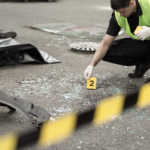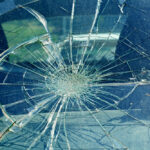South Australian Criminal Offences Relating to the Death of a Cycling World Champion

The cycling community has been left in shock following the death of world champion rider Melissa Hoskins, allegedly at the hands of her husband, fellow cyclist Rohan Dennis.
It has been reported that police will allege that Melissa Hoskins jumped onto the bonnet of a car driven by Dennis and then grabbed at a door handle. It is alleged that Dennis then continued to drive the car until his wife fell to the ground, before being dragged and falling off the vehicle, resulting in her death.
Dennis Hopkins has been charged with causing death by dangerous driving, driving without due care and endangering life.
The following will set out the relevant offences in South Australia, including possible penalties.
It will also outline the equivalent offence of vehicular manslaughter in New South Wales
Relevant offences in South Australia
Dennis has been charged with a number of offences under the Criminal Law Consolidation Act 1935 (SA). The following outlines these key offences and relevant penalties.
Offences in South Australia are commonly separated into ‘basic’ and ‘aggravated’ offences, with the latter carrying harsher penalties.
An ‘aggravated’ offence will occur if any of the circumstances of aggravation outlined under s5AA of the Act apply.
Once such circumstance of aggravation is where “the offender committed the offence knowing that the victim of the offence was a person with whom the offender was, or was formerly, in a relationship”. As such, it seems likely that if convicted of any of the following offences Mr Dennis will receive the aggravated penalty.
The offence of using a vehicle causing death
The offence of causing death or harm by use of vehicle or vessel is outlined under section 19A of the Act, which states:
(1) A person who—
(a) drives a vehicle or operates a vessel in a culpably negligent manner, recklessly, or at a speed or in a manner dangerous to any person; and
(b) by that culpable negligence, recklessness or other conduct, causes the death of another,
is guilty of an indictable offence.
Maximum penalty:
(a) where a motor vehicle or motor vessel was used in the commission of the offence—
(i) for a first offence that is a basic offence—imprisonment for 15 years and, in the case of an offence involving the use of a motor vehicle, disqualification from holding or obtaining a driver’s licence for 10 years or such longer period as the court orders;
(ii) for a first offence that is an aggravated offence or for any subsequent offence—imprisonment for life and, in the case of an offence involving the use of a motor vehicle, disqualification from holding or obtaining a driver’s licence for 10 years or such longer period as the court orders;
(b) where neither a motor vehicle nor motor vessel was used in the commission of the offence—imprisonment for 7 years.
The offence of causing death through careless use of a vehicle
The offence of leaving accident scene etc after causing death or harm by careless use of vehicle or vessel is outlined under section 19AB of the Act, which states:
(1) A person who—
(a) drives a vehicle or operates a vessel without due care or attention; and
(b) by that conduct, causes the death of another; and
(c) fails to satisfy the statutory obligations of a driver of a vehicle or an operator of a vessel (as the case may be) in relation to the incident,
is guilty of an offence.
Maximum penalty:
(a) where a motor vehicle or motor vessel was used in the commission of the offence—
(i) for a first offence—imprisonment for 15 years and, in the case of an offence involving the use of a motor vehicle, disqualification from holding or obtaining a driver’s licence for 10 years or such longer period as the court orders;
(ii) for a subsequent offence—imprisonment for life and, in the case of an offence involving the use of a motor vehicle, disqualification from holding or obtaining a driver’s licence for 10 years or such longer period as the court orders;
(b) where neither a motor vehicle nor motor vessel was used in the commission of the offence—imprisonment for 7 years.
The offence of acts endangering life
The offence of acts endangering life or creating risk of serious harm is outlined under section 29 of the Act, which states:
(1) Where a person, without lawful excuse, does an act or makes an omission—
(a) knowing that the act or omission is likely to endanger the life of another; and
(b) intending to endanger the life of another or being recklessly indifferent as to whether the life of another is endangered,
that person is guilty of an offence.
Maximum penalty:
(a) for a basic offence—imprisonment for 15 years;
(b) for an aggravated offence—imprisonment for 18 years.
New South Wales offence of dangerous driving occasioning death
In NSW, the offence of dangerous driving occasioning death is outlined under section 52A of the Crimes Act (NSW) which states:
A person is guilty of the offence of dangerous driving occasioning death if the vehicle driven by the person is involved in an impact occasioning the death of another person and the driver was, at the time of the impact, driving the vehicle–
(a) under the influence of intoxicating liquor or of a drug, or
(b) at a speed dangerous to another person or persons, or
(c) in a manner dangerous to another person or persons.
A person convicted of an offence under this subsection is liable to imprisonment for 10 years.
(2) A person is guilty of the offence of aggravated dangerous driving occasioning death if the person commits the offence of dangerous driving occasioning death in circumstances of aggravation. A person convicted of an offence under this subsection is liable to imprisonment for 14 years.
To establish the offence, the prosecution must prove beyond reasonable doubt that the defendant was:
- The driver of a motor vehicle
- Involved in an impact causing the death of another person, and
- Under the influence of alcohol or a drug, driving at a dangerous speed, or driving in a dangerous manner.
An ‘impact’ is defined as that which occurs:
- Between an object or a person and the vehicle,
- Between an object, including the ground, due to being thrown from the vehicle,
- With another vehicle or object in, on or near a person,
- With anything on or attached to the vehicle,
- With anything in motion through falling from the vehicle,
- When a vehicle overturns or leaves the road, or
- When a person falls or is thrown or ejected from the vehicle.
‘Circumstances of aggravation’ exist where the accused:
- Had a ‘prescribed concentration of alcohol’ in your bloodstream,
- Exceeded the speed limit by more than 45 km/h, or
- Was ‘very substantially impaired’ by a drug or drugs.
A ‘prescribed concentration of alcohol’ is a reading of at least 0.15.
As noted above, the maximum penalty for this offence is 10 years imprisonment for the general offence and 14 years for the aggravated offence.
Possible legal defences
The prosecution will not be able to establish criminal liability if it is unable to prove beyond reasonable doubt that Ms Hopkins was unlawfully killed or that the driving was careless or dangerous.
In circumstances where the prosecution is able to prove all of the essential elements of the offence, several legal defences may still apply to the charge, the most common of which is the legal defence of self-defence.. And it is important to be aware that if evidence raises the availability of self-defence, the prosecution must then disprove the defence beyond a reasonable doubt.
If the prosecution is unable to do this, the defendant must be found not guilty.
The defendant may also be found not guilty on the basis of mental health impairment or cognitive impairment (the ‘insanity defence‘).
Have you been charged with a driving offence?
The profession-leading criminal defence team at Sydney Criminal Lawyers has been successfully defending allegations of dangerous driving resulting in death for more than two-decades,.
So if you or a loved-one is suspected or has been charged with vehicular manslaughter, call Sydney Criminal Lawyers anytime on 9261 8881 to get Australia’s most awarded and successful criminal defence firm on your side.






